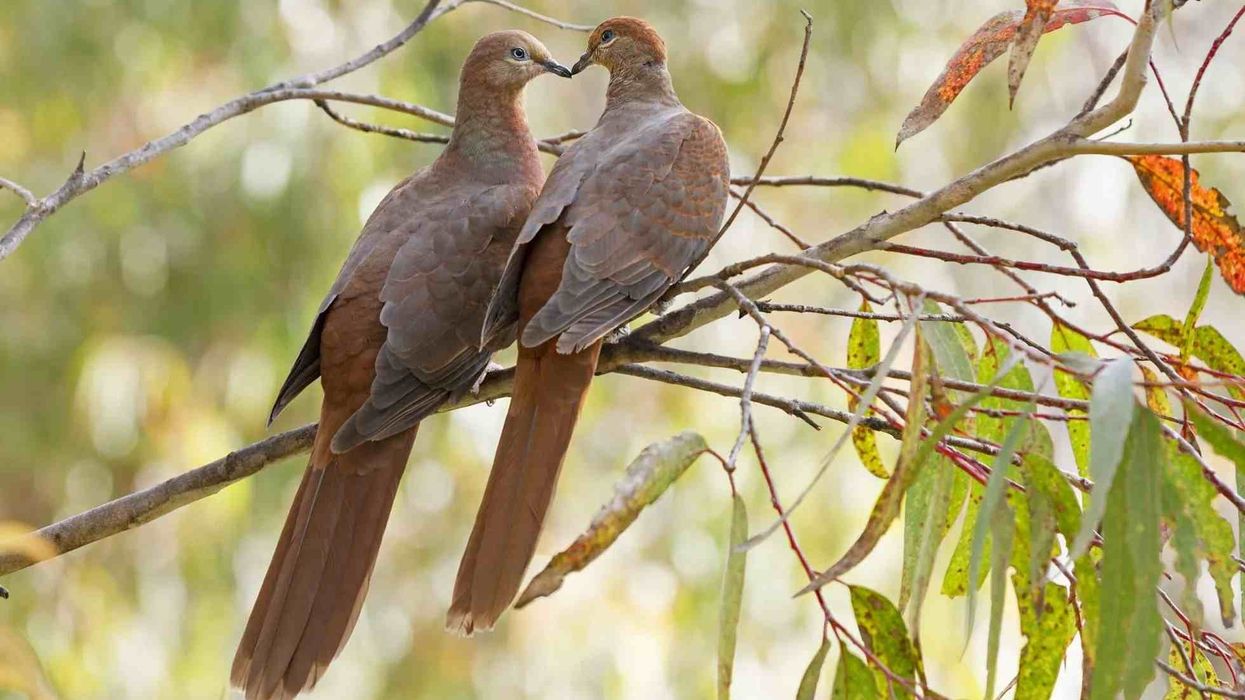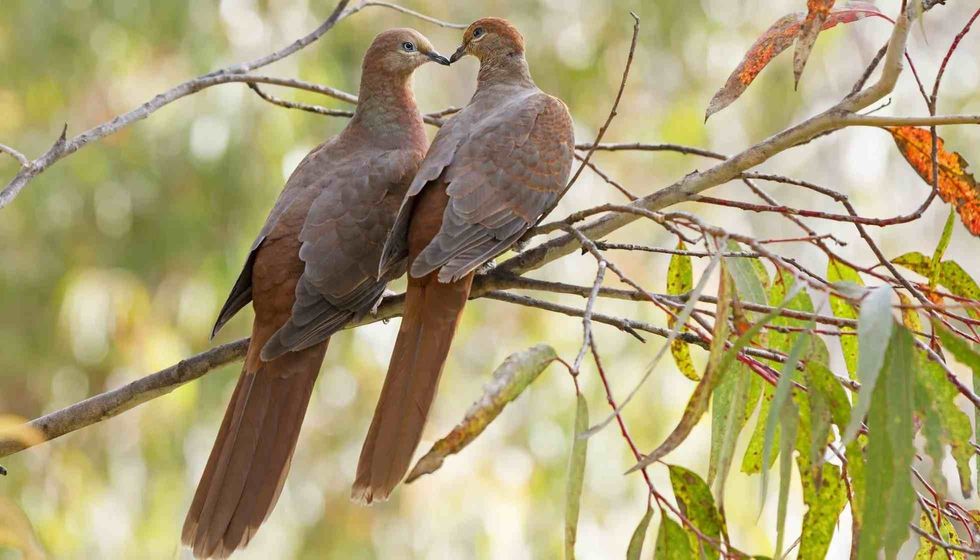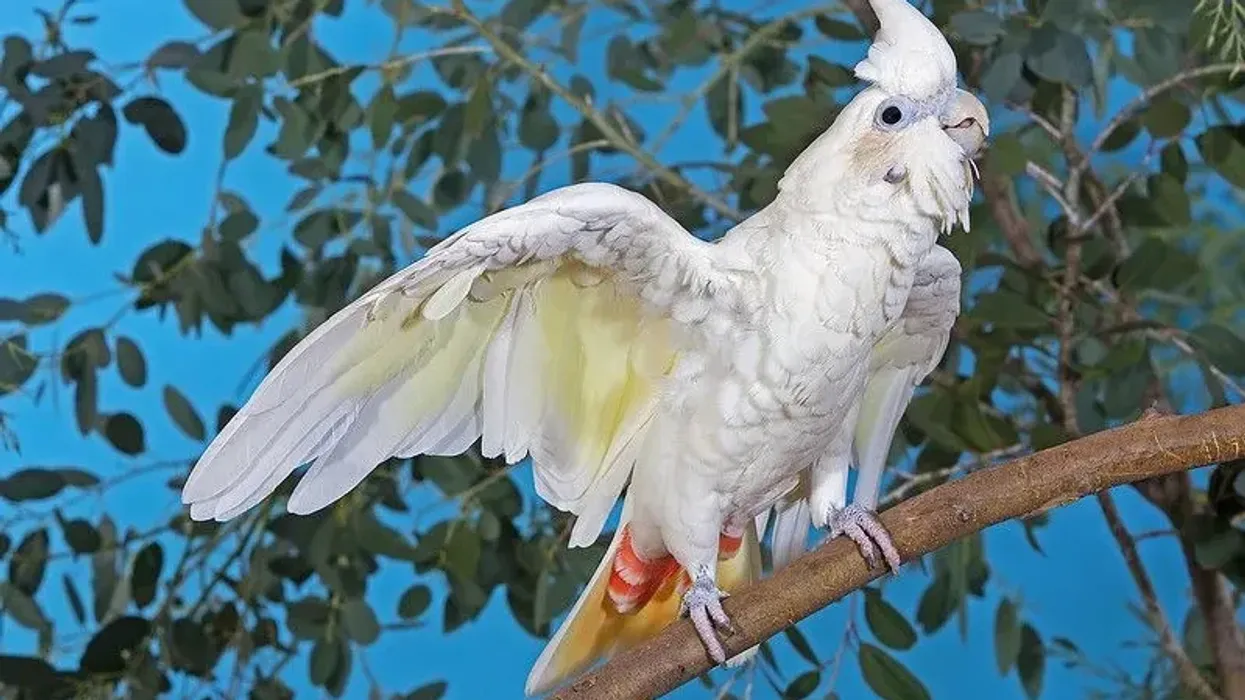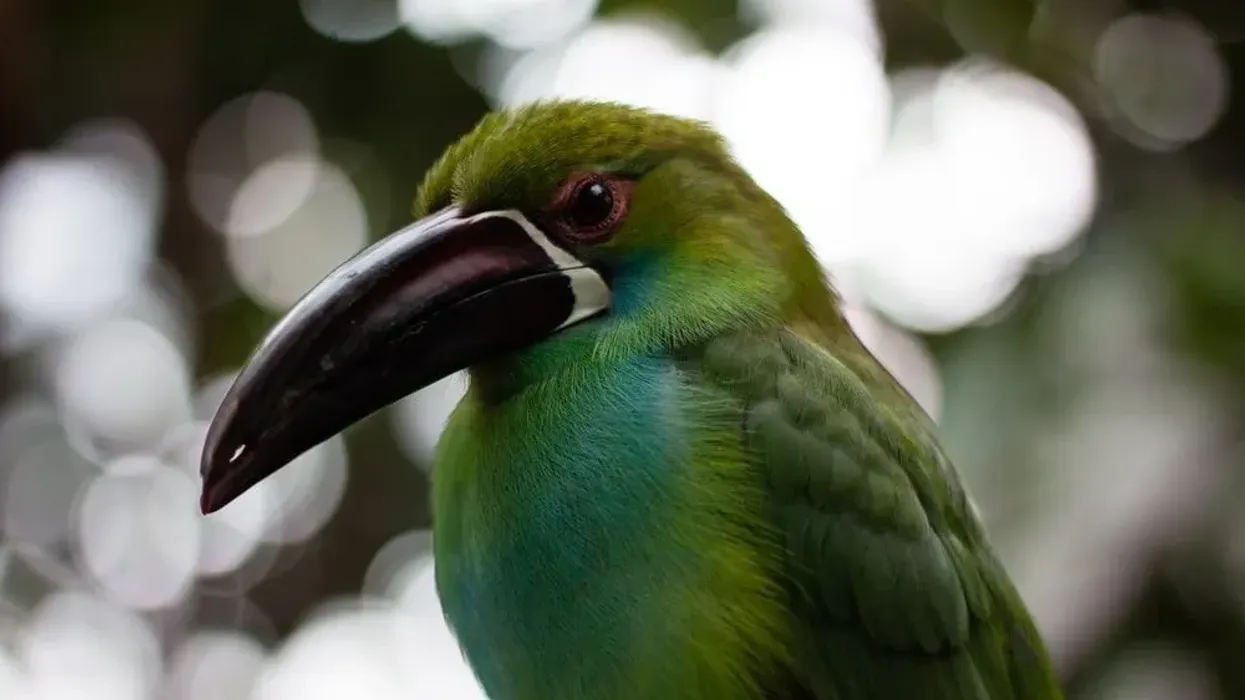The brown cuckoo-dove (Macropygia phasianella) is one of the three new species that were defined when the slender-billed cuckoo-dove (Macropygia amboinensis) was split.
The Amboyna cuckoo-dove retains the binomial name Macropygia amboinensis, while the third species, Sultan's cuckoo-dove, received the name Macropygia doreya. The brown cuckoo-dove (Macropygia phasianella) is also often called a brown pigeon or a brown pheasant pigeon, though these terms may cause confusion with other species.
The brown cuckoo dove habitat is most often found in Australia, New Guinea, the Philippines, and Tasmania.
The distinguishing feature of the brown cuckoo-dove (Macropygia phasianella) is its unusually long tail, which it uses to perform a variety of acrobatic moves to reach inaccessible fruits. This is not seen in the Macropygia amboinensis and doreya species and was one of the factors that led to the split.
This species has relatively short wings but is able to fly near the ground with great power using their long tail and strong abdomen muscles.
The brown cuckoo dove call is often heard long before one can spot it in its dense rainforest habitat and sounds like a loud 'whoop-a-whoop'. Slight differences can be heard in this 'whoop' call depending on the subspecies of the brown cuckoo-dove in question.
Brown cuckoo-dove birds (Macropygia phasianella) are separated into three different subspecies, each found in different parts of Australia.
If you enjoy this article on the brown cuckoo dove (Macropygia phasianella), make sure to check out our facts pages on the Nicobar pigeon and the German nun pigeon.
Brown Cuckoo-Dove Interesting Facts
What type of animal is brown cuckoo-dove?
The brown cuckoo-dove (Macropygia phasianella) or the brown pheasant pigeon is a type of bird.
What class of animal does brown cuckoo-dove belong to?
Brown cuckoo-doves are classified as Aves, the class of a huge range of bird species. In this class, this bird belongs to the genus Macropygia, which includes a much smaller range of doves and pigeons.
These birds were split from the slender-billed cuckoo-dove species because of the size of their tail, which was different from other species now split from the same ex-species.
How many brown cuckoo-doves are there in the world?
While the exact number of brown cuckoo-doves in the world is not known, these birds are considered to be pretty abundant within their habitat range, meaning they are not rare. The brown cuckoo-dove range stretches across eastern Australia, New Guinea, and the Philippines.
Where does brown cuckoo-dove live?
Brown cuckoo-doves, also called brown pheasant pigeons, are most often found in eastern Australia, in the south of Papua New Guinea, and the Philippines. They can be seen collecting nest materials to construct a nest high up in the canopy. They are not endemic to any country.
What is a brown cuckoo-dove's habitat?
The brown cuckoo-dove's habitat range consists of rainforest, scrubland, and moist forest and woodland.
Who do brown cuckoo-doves live with?
Brown cuckoo-doves are mostly solitary but can be found in male-female pairs during the breeding season. In the dense foliage of the rainforest, they are far easier to hear than to spot.
How long does brown cuckoo-dove live?
While the exact lifespan of the brown cuckoo-dove bird, formerly called the pheasant-tailed pigeon, has not been studied, similar species are known to be able to live for around six to 10 years.
How do they reproduce?
The brown cuckoo dove bird, also commonly called a brown pigeon, reproduces sexually, just like any other species of bird. Not much is known about any possible mating rituals that brown cuckoo doves may have.
Only one cream-white egg is laid by the female brown cuckoo-dove bird at a time. The nest of the brown cuckoo-dove consists of a small number of twigs and sticks laid length-wise across a branch at the very top layer or second layer of the rainforest it lives in.
Both male and female birds take part in feeding and incubating the young. The hatchling brown pigeon is covered in thick brown down feathers which eventually give way to more thin feathers as it matures.
What is their conservation status?
The brown cuckoo-dove bird or the brown pheasant-tail pigeon is currently listed on the International Union for Conservation of Nature (IUCN) Red List of Threatened Species as a species of Least Concern, meaning it is relatively abundant within its habitat range.
Brown Cuckoo-Dove Fun Facts
What do brown cuckoo-doves look like?
The brown cuckoo-dove bird or the brown pigeon is covered in dark brown plumage throughout its entire body and tail. Like most species of pigeon, they also have an iridescent green or purple tuft of feathers near their neck.
Their overall coloration makes them quite hard to spot amongst the trees of the rainforest.
These birds have relatively short wings compared to other similar birds but have an extremely long tail, which they can use as a counterbalance when reaching for particularly inaccessible fruits and nuts hidden away in the forest.
As such, it is an extremely acrobatic bird species and can perform a variety of stunts to get what it seeks from the rainforest.
We've been unable to source an image of a brown cuckoo-dove and have used an image of its habitat. If you are able to provide us with a royalty-free image of a brown cuckoo-dove, we would be happy to credit you. Please contact us at hello@kidadl.com.
How cute are they?
This species is about as cute as any other species of bird, and if you are a bird lover, you are sure to enjoy their luxurious brown plumage. Around humans, this bird has a largely docile and all-knowing temperament, similar to that of a common dove.
How do they communicate?
The call of the brown cuckoo-dove is a distinct 'whoop' sound which it uses to convey its mood and its social status to other individuals in the vicinity. Its call is quite similar to the pigeon guillemot.
How big is brown cuckoo-dove?
An adult brown cuckoo-dove grows to around 16-17 in (40-43 cm), meaning it is almost exactly the same size as a rock dove and over four times larger than a rufous hummingbird.
How fast can a brown cuckoo-dove fly?
While the exact flight speed of the brown cuckoo-dove has not been studied, similar birds have been known to hit speeds of around 25 mph (40 kph).
How much does brown cuckoo-dove weigh?
The average adult brown cuckoo-dove weighs around 10.5 oz (300 g).
What are the male and female names of the species?
Both male and female brown cuckoo-doves can be referred to by the same name.
What would you call a baby brown cuckoo-dove?
Baby birds are most often called hatchlings, so a baby of this species is called a brown cuckoo-dove hatchling.
What do they eat?
Brown cuckoo-doves are known to prey on a variety of insects like beetles, ticks, mites, fleas, mosquitoes, and worms. Apart from this, they can also be seen feeding on fruits, leaves, shoots, roots, nuts, and berries. They are sometimes regarded as pest birds by farmers in Australia.
Are they dangerous?
No, not at all! They would much rather fly away than attack a human. However, as can be expected, a wild brown cuckoo-dove that feels threatened with no means of escape may bite you, though they cannot really cause any harm.
Would they make a good pet?
Yes, absolutely! They do not require much care and can be fed easily. They are extremely cute and can be tamed too. They are often kept as companions in Australia.
Did you know...
Baby pigeons are never be seen in the wild as they wait patiently in their nests and eat food brought to them by their parents until they are mature enough to fly.
By the time this happens, they already look like an adult pigeon. Slight differences in size and coloration between an adult and a juvenile are hard to notice, leading many people to think that baby pigeons simply don't exist.
Conspiracy theorists can rest assure that several photographs and videos of baby pigeons in their nests exist, and they are extremely cute!
Do brown cuckoo-doves migrate?
Brown cuckoo-doves do not usually have to migrate during any season of the year since they are well-adapted to the conditions of their home countries. These birds can be spotted in Oceania during any time of the year, given you know where to search for them.
Are baby pigeons brown?
Baby pigeons are usually gray when they are firstborn. As these birds mature, they slowly grow feathers the same color as their parents.
Here at Kidadl, we have carefully created lots of interesting family-friendly animal facts for everyone to discover! Learn more about some other birds from our tawny eagle facts and golden pheasant facts pages.
You can even occupy yourself at home by coloring in one of our free printable Brown cuckoo dove coloring pages.








